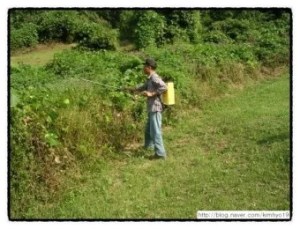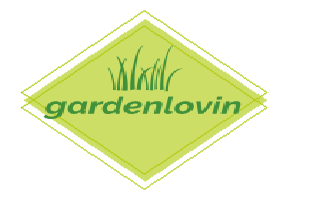Between weather, weeds, insects, and soil conditions, it can be feat to get anything to grow in your garden. If you are trying to put food on the table, this can be even more difficult, especially if you are trying to adhere to organic protocols.
Bugs don’t care whether you are trying to grow organic vegetables or not, they will still show up for an all-you-can-eat buffet. While most pesticides give quick solutions to eliminating pests, they can also be potentially harmful to the food you’re trying to grow.
There are a number of solutions to garden pests that still adhere to organic guidelines. These approaches are less traditional, but can reduce or remove insects completely. Be sure the methods you choose are eliminating only the problem pests and not the insects that can help growth.

Pick Your Pest
Mother Earth News conducted a survey of 1300 gardeners across the country and what pests are their biggest problems and what are the most effective organic solutions. There were 4 main pests that almost all gardeners had to deal with.
· Slugs: The number one pest slot goes to the slug. Over half of gardeners deal with these slimy critters. The most successful method for beating slugs was simply picking them up and tossing them away. Iron phosphate baits, and diatomaceous earth were also highly effective. Surprisingly, beer traps also had an 80 percent success rate.

· Squash Bugs: These bugs are particularly fond of squash plants, and ruined them for almost half of the survey respondents. For most, the most effective method was handpicking and thoroughly cleaning up infested plants at the end of the season.
· Cabbageworms: These little white butterflies might seem harmless, but experienced gardeners know the damage they can cause. Most gardeners rely on Bt (Bacillus thuringiensis) and spinosad for dealing with cabbage worms. However, row covers also seemed to be somewhat effective.
· Aphids: It’s no surprise these bugs made the list. They tormented 50 percent of gardeners, but they also have high success rates of elimination. The best method was simply to prune off the affects area and apply insecticidal soap. Also attracting beneficial insects was proven helpful.
Prevention:
Perhaps the best organic pest control is simply to prevent them from showing up in the first place. Take care of your plants by pulling out any weaker stems, building healthy soil, and rotating your crops on a regular basis. Keep foliage dry and keep your garden free of debris where bugs may like to hide. This is a great way to start getting your pest problem under control.
While it is always a good idea carefully tend to your plants and give them the attention they need to thrive, some pests are persistent. There are sprays and insecticide options that don’t include harmful chemicals.
Tree Hugger recommends 8 different natural insecticides, but still gives a word of caution when trying natural methods:
“Just because these are ‘natural’ or homemade insecticides, that doesn’t imply that they couldn’t harm your soil, your garden, or your person. An insecticide is defined as “a substance used to kill insects,” and as such, they have the potential to “significantly alter ecosystems” and can be toxic to humans and other animals, so before going all out with any pesticide or insecticide, be sure to do your homework and choose the most effective, least harmful (to you and your garden) option.”
The following are just three of the methods recommended by Tree Hugger as a great place to start for natural pest control options.
1. Oil Spray:
This is a combination of 1 cup vegetable oil to 1 TB soap. Best used for aphids, mites, thrips, etc. Simply combine in a spray bottle and spray directly on the surfaces of the plants. They say this works by coating the bodies of the insects, and blocks the pores through which they breathe, which suffocates the bugs.
2. Neem Oil:

Neem oil is a natural insecticide. It disrupts the life cycle of insects at all stages by acting as a hormone disruptor and as an “antifeedant”. It is biodegradable and is nontoxic to other animals. It may also help with mildew and fungal infections in plants and can be found at many garden or natural food stores.
3. Garlic insecticide spray:
It is the strong and well-known scent of garlic that can be used as a natural insecticide. Make a basic garlic spray by creating a garlic paste in a food processor with two bulbs and a bit of water. Let the mixture sit overnight and then strain it into a quart jar, adding 1/2 cup of vegetable oil (optional), 1 teaspoon of mild liquid soap, and enough water to fill the jar. This create a concentrate that is ready to use throughout the year by mixing one cup of the mixture with 1 quart of water and spraying on infested plants. You can also make a similar spray with chili peppers.
4. Diatomaceous Earth:

This is a natural substance made from a sedimentary rock created by fossilized algae (diatoms). It is fairly easy to find and can be used in a lot of ways both in the garden and around the home. For plants, it simply absorbs the lipids from insects and dehydrates them to death. You can simply purchase diatomaceous earth at garden stores and dust the ground around your plants. This works great for snails and slugs and other crawling insects.
Every organic gardener seems to have their own methods they swear by. It always seems to be a special blend and a secret ratio of ingredients that spells success. The only way to discover what works best for you is by paying close attention to the effects of a specific recipe, and modify I as necessary.
Always be carefully about what you’re using and what the desired result is. A healthy ecosystem is usually the most effective option for clean, delicious eating. This requires beneficial insects, microbes and fungi to work together. The more you can work with the ecosystem instead of against it, the more successful you will be.
